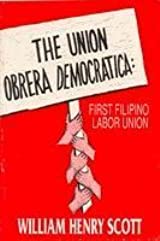Related Research Articles

The Communications Workers of America (CWA) is the largest communications and media labor union in the United States, representing about 700,000 members in both the private and public sectors. The union has 27 locals in Canada via CWA-SCA Canada representing about 8,000 members. CWA has several affiliated subsidiary labor unions bringing total membership to over 700,000. CWA is headquartered in Washington, D.C., and affiliated with the AFL–CIO, the Strategic Organizing Center the Canadian Labour Congress, and UNI Global Union. The current president is Chris Shelton.

The United Steel, Paper and Forestry, Rubber, Manufacturing, Energy, Allied Industrial and Service Workers International Union, commonly known as the United Steelworkers (USW), is a general trade union with members across North America. Headquartered in Pittsburgh, the United Steelworkers represents workers in Canada, the Caribbean, and the United States. The United Steelworkers represent workers in a diverse range of industries, including primary and fabricated metals, paper, chemicals, glass, rubber, heavy-duty conveyor belting, tires, transportation, utilities, container industries, pharmaceuticals, call centers, museums, and health care.
International Photo-Engravers' Union of North America (IPEU) was a labor union formed in 1904 to represent halftone photoengravers in the printing industry. Its successor union is the International Brotherhood of Teamsters, Change to Win Federation.
The International Typographical Union (ITU) was a US trade union for the printing trade for newspapers and other media. It was founded on May 3, 1852, in the United States as the National Typographical Union, and changed its name to the International Typographical Union at its Albany, New York, convention in 1869 after it began organizing members in Canada. The ITU was one of the first unions to admit female members, admitting women members such as Augusta Lewis, Mary Moore and Eva Howard in 1869.

The Amalgamated Lithographers of America (ALA) is a labor union formed in 1915 to conduct collective bargaining on behalf of workers in the craft of lithography. The ALA was established through the amalgamation of several small unions already existing in the lithographic industry, one of which dated back to 1886.

The Unión Obrera Democrática Filipina was a trade union center in the Philippines. The organization was considered as the first-ever modern trade union federation in the country; earlier labor groups had been more of mutual aid societies and guilds. The organization had thirty-three affiliated trade unions as of 1902. In 1903, the organization counted 150 affiliated unions, with around 20,000 members in the Manila area. At its peak, the Union Obrera Democratica had approximately 150,000 members in eight provinces of Luzon. Its members were also the very first members of the Philippine Independent Church when it was proclaimed in 1902.
The Graphic Communications International Union (GCIU) was a labor union representing printing workers in the United States and Canada.

The International Graphical Federation (IGF) was a global union federation bringing together unions of printing workers around the world.
The International Federation of Bookbinders and Kindred Trades was a global union federation representing unions of bookbinders.
The Graphics Federation was a trade union representing workers in the graphics and printing industries in Denmark.
The Danish Typographical Union was a trade union representing typographers in Denmark.
The Danish Lithographers' Union was a trade union representing printers in Denmark.
The Danish Bookbinders' and Stationers' Union was a trade union representing bookbinders and workers involved in making stationery in Denmark.
The International Stereotypers' and Electrotypers' Union (ISEU) was a labor union representing workers in two related trades in the United States and Canada.
The International Printing Pressmen and Assistants' Union of North America (IPPU) was a labor union representing printing workers in the United States and Canada.
The International Printing and Graphic Communications Union (IPGCU) was a labor union representing printing workers in the United States and Canada.
The Lithographers' and Photoengravers' International Union (LPIU) was a labor union representing printing workers in the United States and Canada.
The International Brotherhood of Bookbinders (IBB) was a labor union representing bookbinding workers in the United States and Canada.
Kenneth James Brown is a former Canadian-born American labor union leader.
James J. Norton was an American labor union leader.
References
- 1 2 "Lithographer Union to Join Bookbinders on Labor Day". New York Times. 20 March 1972. Retrieved 1 May 2022.
- ↑ "Graphic Arts International Union (GAIU)". UIA. Retrieved 1 May 2022.
- ↑ Von Bergen, Drew (25 June 1981). "A new union that would have 325,000 members". Chicago Tribune. Retrieved 1 May 2022.
- ↑ "Inactive Organizations" (PDF). UMD Labor Collections. University of Maryland. Retrieved 18 April 2022.